be quiet! Pure Power 10 600W PSU Review
Why you can trust Tom's Hardware
Teardown & Component Analysis
Parts Description
Before proceeding with this page we strongly encourage you to a look at our PSUs 101 article, which provides valuable information about PSUs and their operation, allowing you to better understand the components we're about to discuss. Our main tools for disassembling PSUs are a Thermaltronics soldering and rework station and a Hakko FR-300 desoldering gun. Finally, for the identification of tiny parts we use an Andonstar HDMI digital microscope.
| General Data | |
|---|---|
| Manufacturer (OEM) | FSP |
| Platform Model | Raider |
| Primary Side | |
| Transient Filter | 4x Y caps, 2x X caps, 2x CM & 1 DM chokes, 1x GTD |
| Inrush Protection | NTC Thermistor |
| Bridge Rectifier(s) | 1x |
| APFC MOSFETs | 2x JCS18N50FH (500V, 11A @ 100°C, 0.27Ω) |
| APFC Boost Diode | 1x STMicroelectronics STTH8R06FP (600V, 8A @ 130°C) |
| Hold-up Cap(s) | 1x Teapo (420V, 330uF, 2000h @ 85°C, LH) |
| Main Switch | 1x Infineon IPA80R460CE (800V, 6.8A @ 100°C, 0.46Ω) |
| Reset Switch | 1x CET CEF03N8 (800V, 2A @ 100°C, 4.8Ω) |
| Combo APFC/Switching Controller | FSP 6600 IC |
| Topology | Primary side: Active Clamp Reset Forward Secondary side: Synchronous Rectification & DC-DC converters |
| Secondary Side | |
| +12V MOSFETs | 2x |
| 5V & 3.3V | DC-DC Converters: 4x Infineon IPD060N03L G (30V, 50A @ 100°C, 6mΩ) PWM Controller: 2x FSP6601 |
| Filtering Capacitors | Electrolytics: 8x Teapo SC (1-3,000 @ 105°C, SC), 4x Teapo SY (3-6,000 @ 105°C) Polymers: 5x CapXon (modular board) |
| Supervisor IC | Weltrend WT7527 (OVP, UVP, OCP, SCP, PG) |
| Fan Model | BQ QF1-12025-MS (120mm, 12V, 0.30A, 52 CFM, 1800 RPM, Rifle Bearing) |
| 5VSB Circuit | |
| Switching FET | CET CEF02N7G (700V, 1.3A @ 100°C, 6.75Ω) |
| Rectifier | 1x PS30U60CTR |




The older Pure Power 9 series was based on the FSP Raider platform, and be quiet!'s new models likely use an upgraded version of the same design with DC-DC converters on the secondary side instead of a group-regulated scheme, along with an NTC thermistor for reduced inrush currents.
On the primary side, an Active Clamp Reset Forward (ACRF) topology is utilized, which offers high efficiency and lower production cost since it doesn't need extra components like an LLC resonant converter. In low-capacity ACRF designs, two FETs are used. One of them is the main switcher (Q1), while the other one is a reset switch (Q2) responsible for disconnecting the clamp capacitor when Q1 is active. Power is transferred from the primary side to the secondary one only when Q2 is open. An ACRF design's strongest advantage is the almost lossless switching of Q1; while it's off, the drain voltage is very low. Another major asset of ACRF is that it achieves a long hold-up time even with low-capacity bulk caps.
When Q1 is active, voltage is applied to T1, meaning that power is transferred from the primary side to the secondary side. When Q2 (also called the auxiliary FET) is active, clamp voltage is applied to T1. The larger the clamp capacitor (C1), the lower the ripple voltage. However, a higher-capacity C1 also slows transient response. So striking the right balance is of crucial importance in an ACRF design.
As mentioned, the major difference between be quiet!'s Pure Power 9 and 10 families is that the latest generation uses DC-DC converters on the secondary side for generating the minor rails. The older models use a group-regulation scheme where the +12V and 5V rails are linked together; only the 3.3V rail is independently regulated. This is the reason why the older Pure Power units performed poorly under loads unbalanced between the +12V and 5V rails.
What's more, the new models feature inrush current protection in the form of an NTC thermistor.
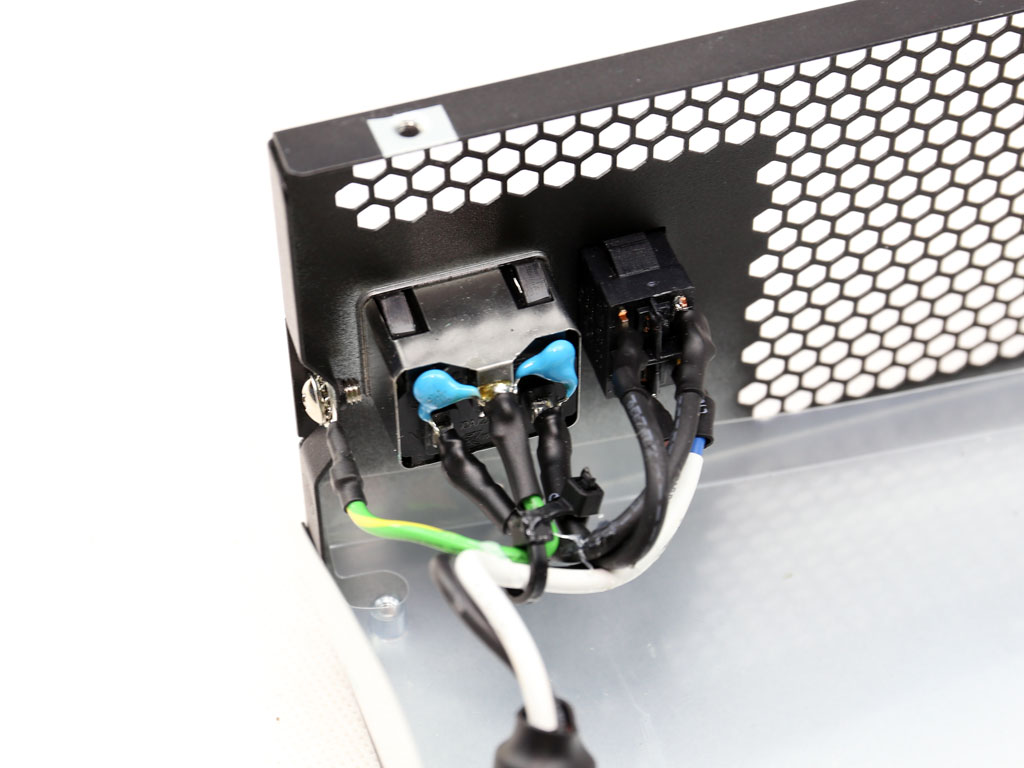


The first part of the transient filter starts at the AC receptacle and includes two Y caps. As expected, it continues on the main PCB with two more Y caps, a pair of X caps, two CM chokes, and a single DM one. Instead of an MOV, a gas discharge tube is used. We'd actually prefer if be quiet! used an MOV, since it responds faster and doesn't short-circuit the input in case of a surge.
Get Tom's Hardware's best news and in-depth reviews, straight to your inbox.


The single bridge rectifier is installed on a dedicated heat sink with its markings hidden from view.
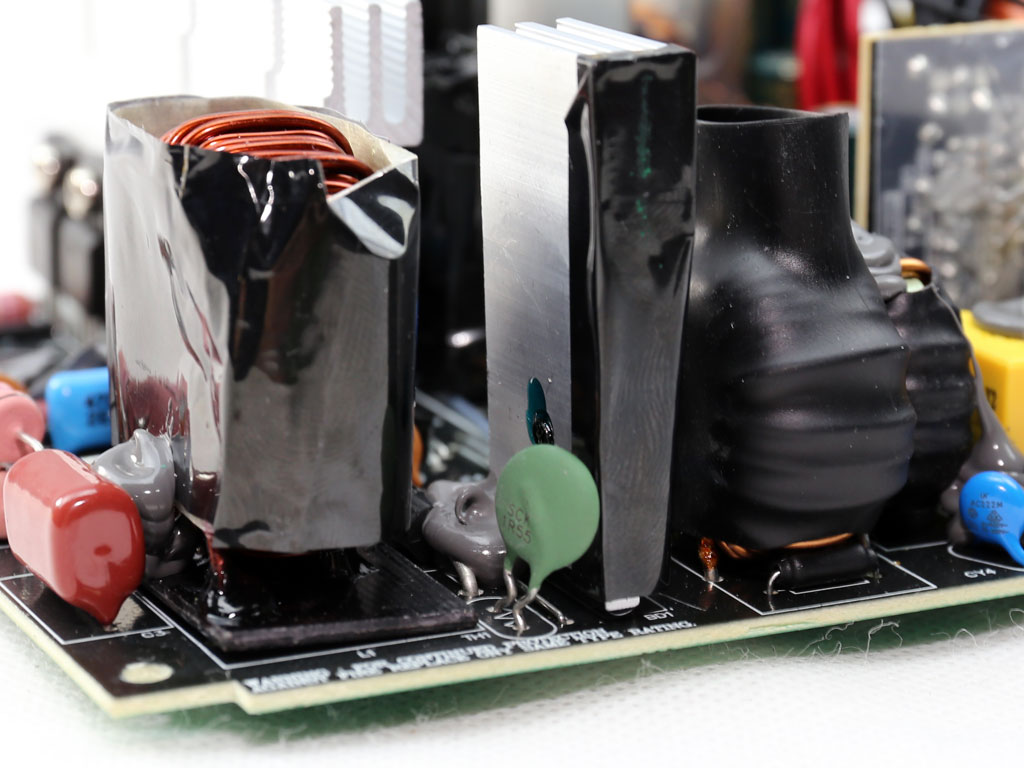

FSP uses an NTC thermistor that provides protection against large inrush currents. The only problem is that there is no bypass relay; this will impose a small efficiency penalty and prevent the thermistor from cooling down quickly. In the next upgrade of this platform, we'd like to see a bypass relay as well.

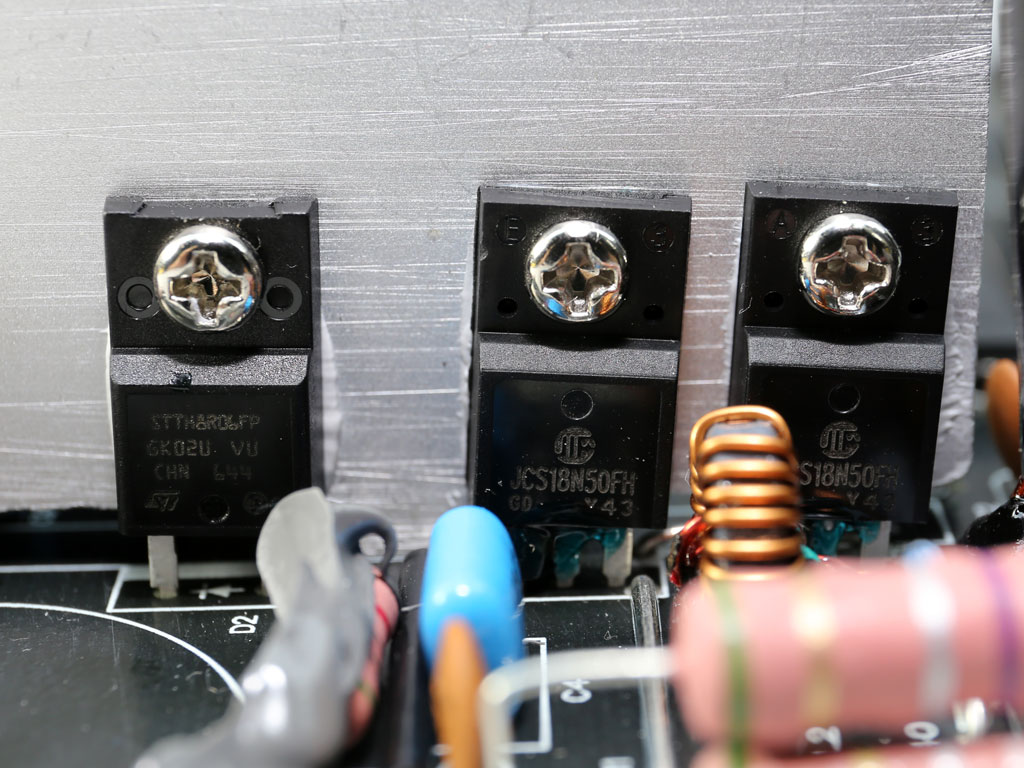

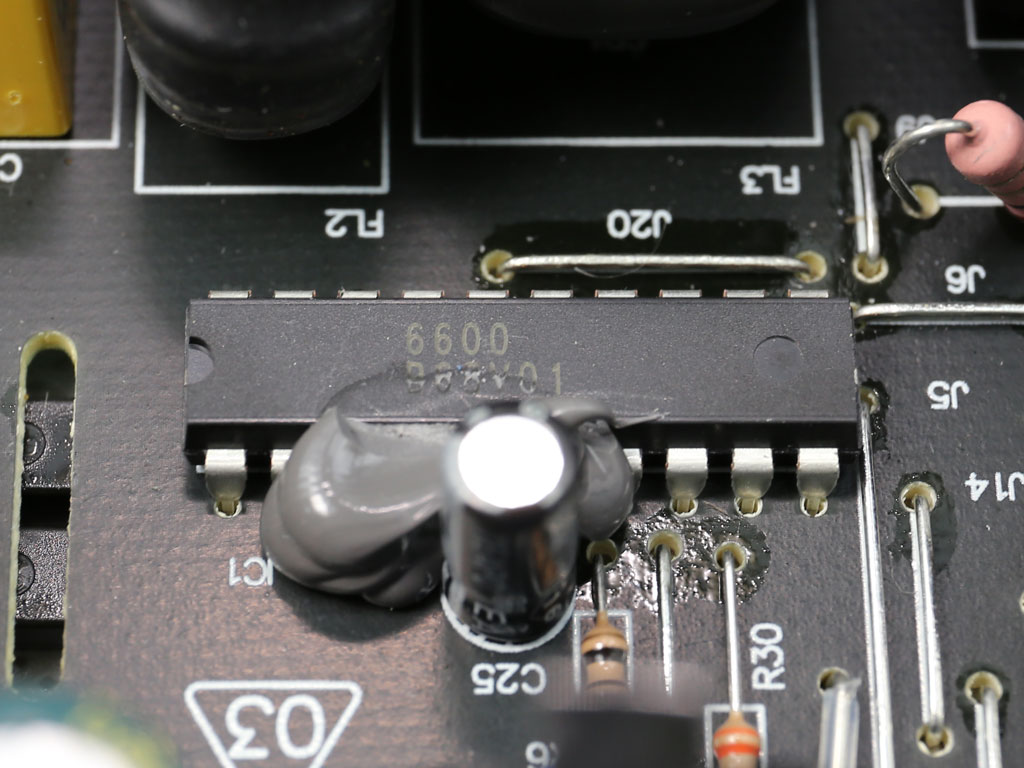
The APFC converter uses two JCS18N50FH FETs and an STMicroelectronics STTH8R06FP boost diode. The bulk cap is provided by Teapo, and it is rated at 85°C. We only see these in mainstream PSUs; most power supplies in this category use 105°C caps. Without a doubt, be quiet! should upgrade this unit's bulk capacitor.
Finally, the combo PFC/PWM controller is an FSP6600 IC. We first encountered this component many years ago, and FSP still hasn't released any information about it.
There are two primary switching FETs. The main one is an Infineon IPA80R460CE (the Pure Power 9 600W model used an Infineon SPA11N80C3), while the auxiliary (reset) FET is a CEP03N8. Though it does confer certain benefits, an ACRF platform generally cannot match the performance of other topologies, especially when it comes to transient response scenarios.
On the primary heat sink, we also find a CEF02N7G FET that's most likely used by the 5VSB circuit.


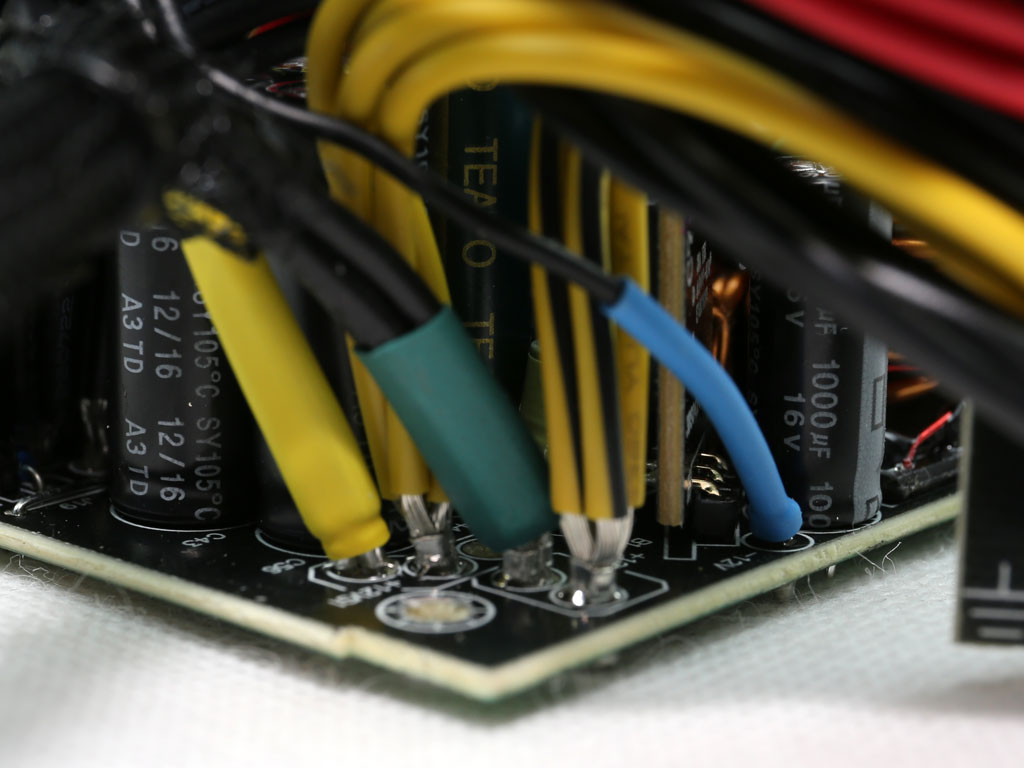
The two FETs that regulate the +12V rail are installed on a small heat sink that's blocked by the main transformer.
There is a thermistor attached to the +12V heat sink that probably provides data to the fan control circuit.



The minor rails are handled by four Infineon IPD060N03L G FETs installed on the solder side of the main PCB. Their PWM controllers, two FSP6601 ICs, are installed on a daughterboard.





The electrolytic filtering caps are provided by Teapo. Most of them belong to the entry-level SC line, and their rated life is either 2000 or 3000 hours, depending on size. Larger electrolytic caps last longer than smaller ones in the same series because they're able to dissipate heat faster. There are also some higher-quality Teapo SY caps, though we don't see many.
In general, we would like to see better filtering caps on the secondary side. In light of the Teapo SC caps that this PSU is dominated by, we're no longer surprised by be quiet!'s three-year warranty.
The three coils on the secondary side are an indication that all major rails are independently regulated.



On the front side of the modular board we find several polymer CapXon caps, along with some ceramic ones that provide extra ripple filtering to the DC outputs.


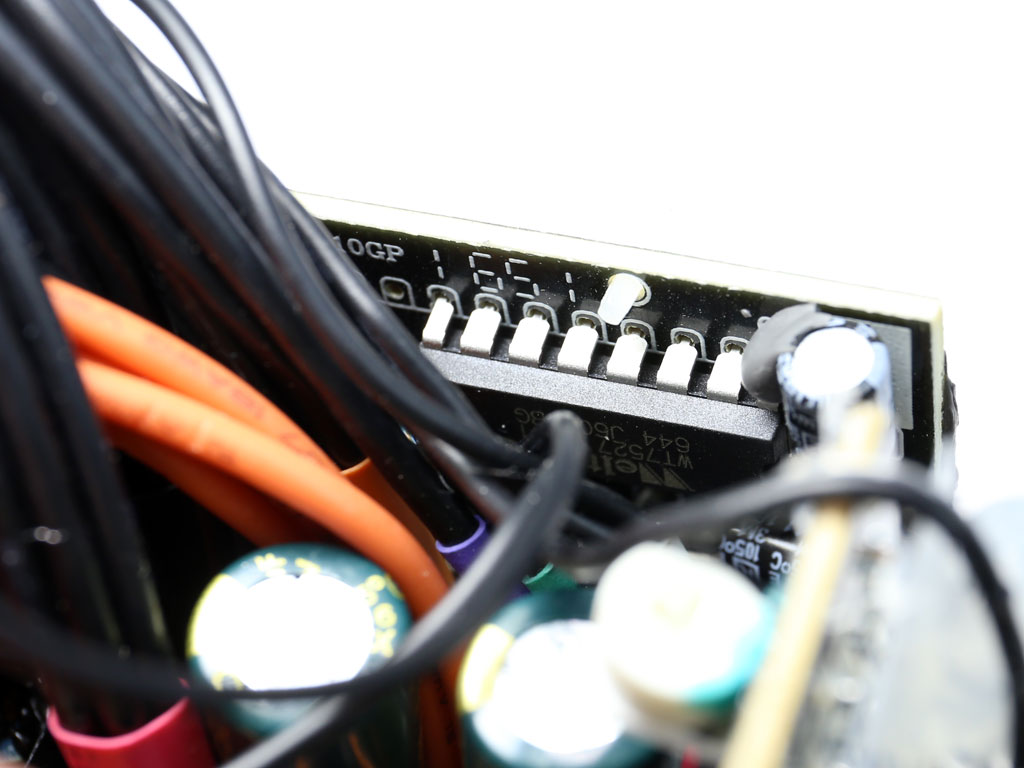
The supervisor IC is a Weltrend WT7527, which is installed on a vertical PCB on the secondary side. This specific IC includes all necessary protection features except over-temperature protection. That's implemented through an external circuit. We know this because we ran the corresponding test and determined the PSU does indeed include OTP.


The 5VSB circuit's switching FET is a CET CEF02N7G, while the rail's rectifier is a PS30U60CTR SBR.



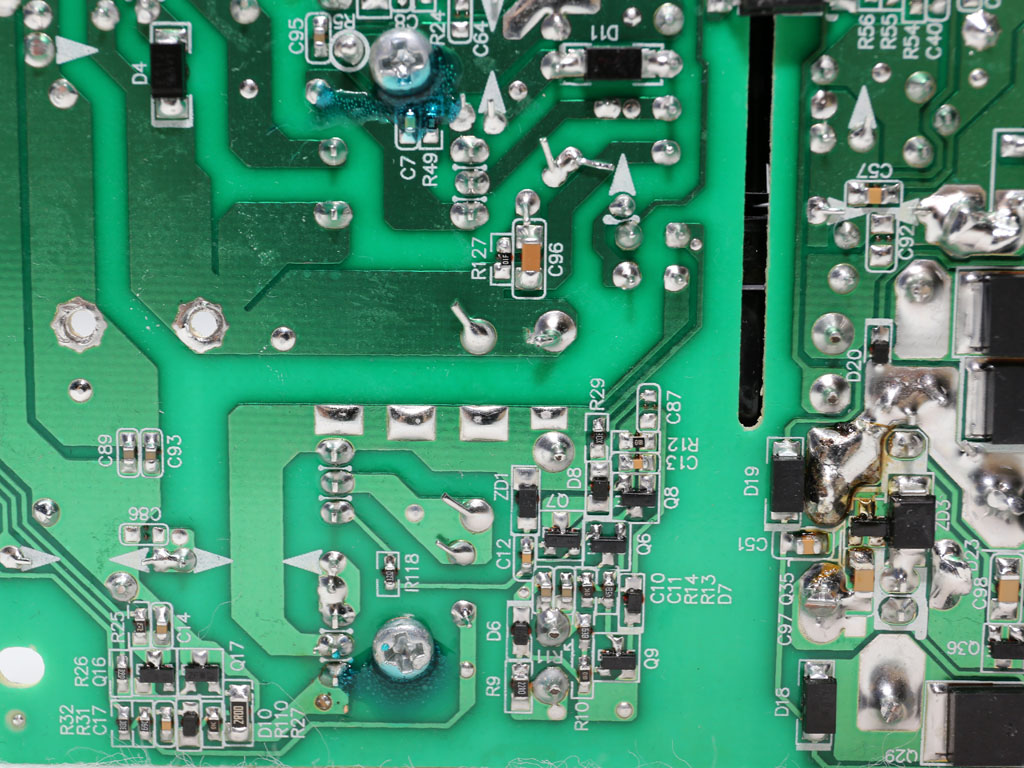


As in the Pure Power 9 series, FSP's soldering quality is decent but not top-notch. What bothers us, again, is that some component leads are longer than they should be. Apparently, the people (or machines) responsible for this job aren't up to the task. We know those long leads probably won't create a short-circuit scenario, but we still believe they should be trimmed correctly.


be quiet!'s QF1-12025-MS (120mm, 12V, 0.3A, 52 CFM, 1800 RPM) fan makes a return. We described it with a sleeve bearing in the Pure Power 9 600W review due to information available to us back then. However, be quiet! claims its fan uses a rifle bearing instead. Unfortunately, we can't be sure of the fan's true bearing type without fully breaking it apart. What we can tell you for sure is that the fan is inaudible under normal operating conditions thanks to a relaxed fan profile.
MORE: Best Power Supplies
MORE: How We Test Power Supplies
MORE: All Power Supply Content
Current page: Teardown & Component Analysis
Prev Page Packaging, Contents, Exterior & Cabling Next Page Load Regulation, Hold-Up Time & Inrush Current
Aris Mpitziopoulos is a contributing editor at Tom's Hardware, covering PSUs.
-
sunny420 This one looks like a pass. Much better units out there. Too bad, I wish the best for BeQuiet!Reply
Another review:
https://www.hardocp.com/article/2017/06/27/be_quiet_pure_power_10_600w_supply_review -
HERETIC-1 For not too many $ more you can get a Seasonic G series.Reply
With quality components-better design-better performance,
and to top it off a longer warranty................................
PSU IS THE MOST IMPORTANT PART OF ANY BUILD.
Avoid these low end PSU's......................



